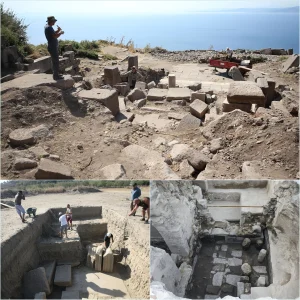Underneath the ruins of a monastery that was founded in 1114 and destroyed by 1700 in Posa, Germany, archaeologists have uncovered a collection of surprisingly well-preserved 500-year-old graves. These burials, which had been carefully arranged and then forgotten over the centuries, have recently been rediscovered.

According to a news release from the State Office for Heritage Management and Archaeology Saxony-Anhalt on June 28, archaeologists began excavating the site in 2017 and have returned annually since then. During this year’s excavation, the focus was on the mid-12th century cloister of the monastery, which had served as living quarters for the monks.

The excavations revealed burials of at least 15 individuals, dating back between 500 to 800 years ago. The skeletons were found densely packed and layered atop each other within an area measuring approximately 10 feet by 25 feet.
Officials have shared photos of these ancient graves, offering a glimpse into the history and preservation of the monastery site and its inhabitants from centuries past.





